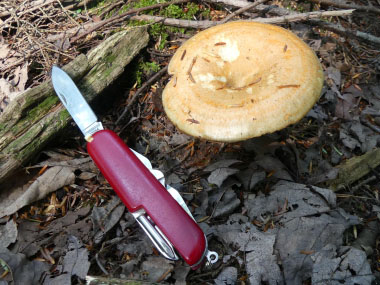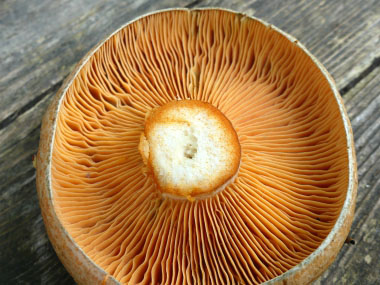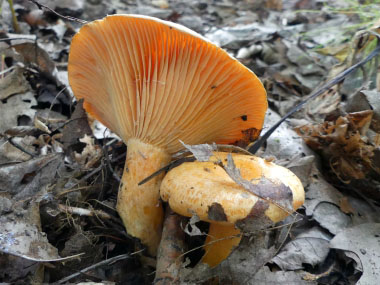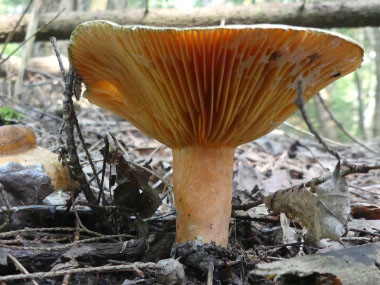






Do not eat any fungi that has not been properly identified by a qualified professional, some are DEADLY when ingested. All edible wild fungi MUST be cooked.
This is a mushroom that when reaches maturation, it can be spotted easily due to its vase-shape. The delicious lactarius is also referred to as the saffron milkcap and is one of the best known members of the large milkcap genus Lactarius in the order Russulales. It is found in many locations throughout Canada, the U.S. and in Europe. It is a favorite go-to mushroom in Spain and in Siberia. It also grows in Australia, Chile and Argentina.
Type
Distinguishing Features
Lactarius deliciosus mushrooms are orange and they bruise green. Sometimes there are hints of yellow on these as well. The caps are 6 to 15 cm across; convex becoming centrally depressed and vase-shaped. They have a somewhat granular surface that becomes sticky when wet. The flesh is primarily orange, when cut it yields an orange latex that soon turns green. Young caps have in-rolled margins and are pinkish-orange.
Height
On average, the stipe (stem) grow up to 7cm (about 3”) tall and can be up to 2cm (1/2”) wide. It is equal to sometimes tapered at the base, orange, dry, occasionally with flattened pits, bruising and staining green with age. They are the same color as the cap or a bit paler. There is no veil.
Habitat
This lactarius grows from the ground in forests. They grow either individually or scattered to gregarious under conifers.
Spore Print
The spore print color is cream to buff.
Season
Depending on geographical location, these fruit anywhere from late summer all the way into mid-winter.
Gills
The gills of this lactarius are shortly decurrent, crowded and bright orange, staining green when bruised. When cut, the gills release a reddish to orange latex.
Edibility
Although these are edible, eat a very small amount in the beginning as some people have reported getting minor stomach aches after consuming. They are good if cooked properly. Lactarius deliciosus requires long, slow cooking to eliminate the grainy texture and slightly bitter flavor. They are also good grilled. High consumption of Lactarius deliciosus could cause the urine to discolour to orange/red.
Other Name
Saffron Milkcap.
Recipes
To support our efforts please browse our store (books with medicinal info, etc.).
Winter Survival Food Handbook

PDF Plant Magazines
Types of Wild Food
Geographic Zones Seasons
Disclaimer
EdibleWildFood.com is informational in nature. While we strive to be 100% accurate, it is solely up to the reader to ensure proper plant identification. Some wild plants are poisonous or can have serious adverse health effects.
We are not health professionals, medical doctors, nor are we nutritionists. It is up to the reader to verify nutritional information and health benefits with qualified professionals for all edible plants listed in this web site. Please click here for more information.
Why Edible Wild Food?
- Food costs are rising
- Free, wild food is readily abundant
- Wild food adds nutrition to your diet
- Wild food can help treat various medical conditions





